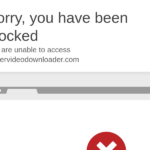snort.org Reviews
is snort.org legitimate or a scam?How much trust do people have in snort.org?
Why is the trust score of snort.org very high?
Key Features of Snort:
1. Rule-Based Detection: Snort uses a rule-based detection engine to identify and alert on suspicious network traffic. These rules can be customized and updated to adapt to new threats.
2. Protocol Analysis: It can perform in-depth protocol analysis to detect anomalies and potential security breaches.
3. Flexibility: Snort is highly flexible and can be integrated with other security tools and systems.
4. Community and Subscriber Rulesets: Snort offers both community and subscriber rulesets. The community ruleset is freely available, while the subscriber ruleset is developed, tested, and approved by Cisco Talos.
5. Real-Time Alerts: It can generate real-time alerts for detected threats, allowing for immediate response.
6. Inline Deployment: Snort can be deployed inline to block malicious traffic, acting as an intrusion prevention system.
Snort's Architecture:
Snort's architecture consists of several components, including:
1. Packet Decoder: It decodes network packets and extracts relevant information for analysis.
2. Detection Engine: This is the core of Snort, where the rule-based detection and analysis take place.
3. Logging and Alerting: Snort can log network traffic and generate alerts based on the configured rules.
4. Output Modules: It supports various output modules for sending alerts and logs to different destinations.
5. Preprocessors: These are used for additional packet analysis and preprocessing.
6. Rule Management: Snort provides tools for managing and updating detection rules.
Using Snort:
To use Snort effectively, users typically follow these steps:
1. Installation: Snort can be installed on Linux and Windows systems. It's important to review the installation guide and ensure that all dependencies are met.
2. Configuration: After installation, Snort needs to be configured based on the specific network environment and security requirements.
3. Rule Management: Users can manage and update detection rules, ensuring that Snort is equipped to detect the latest threats.
4. Monitoring and Response: Once deployed, Snort continuously monitors network traffic and generates alerts for potential security incidents. Users need to have a response plan in place to address these alerts.
Community and Subscriber Rulesets:
The community ruleset is developed by the Snort community and is freely available to all users. It is a collaborative effort to create and maintain detection rules for common and emerging threats.
On the other hand, the subscriber ruleset is developed, tested, and approved by Cisco Talos, a leading threat intelligence organization. Subscribers to the Snort subscriber ruleset receive real-time updates as new rules are released.
The subscriber ruleset is often recommended for organizations that require the highest level of threat detection and want to stay ahead of emerging security risks.
Snort's Role in Network Security:
Snort plays a crucial role in network security by providing real-time threat detection and prevention capabilities. It helps organizations:
1. Identify and Mitigate Threats: By analyzing network traffic, Snort can identify various types of threats, including malware, intrusion attempts, and suspicious activities.
2. Enhance Incident Response: The real-time alerts generated by Snort enable quick incident response, allowing security teams to take immediate action to mitigate potential risks.
3. Monitor Network Health: Continuous monitoring with Snort helps in understanding the overall health and security posture of the network.
4. Support Compliance: For organizations in regulated industries, Snort can assist in meeting compliance requirements by providing robust intrusion detection and prevention capabilities.
5. Adapt to Evolving Threats: With regular updates to detection rules, Snort can adapt to new and evolving security threats, providing ongoing protection.
Overall, Snort is a powerful and widely used tool in the field of network security. Its open-source nature, extensive community support, and the availability of subscriber rulesets make it a valuable asset for organizations looking to strengthen their security posture and protect their networks from a wide range of cyber threats."
the reasons behind this review :
Open-source, Free, Lightweight, Network Intrusion Detection System (NIDS), Real-time Traffic Analysis, Packet Logging, Rule-Based Detection, Customizable, Packet Sniffer, Packet Logger, Intrusion Prevention System (IPS), Protocol Analysis, Community and Subscriber Rulesets, Real-time Alerts, Inline Deployment, Flexible, Integration with Other Security Tools, Architecture, Packet Decoder, Detection Engine, Logging and Alerting, Output Modules, Preprocessors, Rule Management, Installation, Configuration, Rule Management, Monitoring and Response, Community and Subscriber Rulesets, Role in Network Security, Identify and Mitigate Threats, Enhance Incident Response, Monitor Network Health, Support Compliance, Adapt to Evolving Threats, Open-source, Free, Lightweight, Network Intrusion Detection System (NIDS), Real-time Traffic Analysis, Packet Logging, Rule-Based Detection, Customizable, Packet Sniffer, Packet Logger, Intrusion Prevention System (IPS), Protocol Analysis, Community and Subscriber Rulesets, Real-time Alerts, Inline Deployment, Flexible, Integration with Other Security Tools, Architecture, Packet Decoder, Detection Engine, Logging and Alerting, Output Modules, Preprocessors, Rule Management, Installation, Configuration, Rule Management, Monitoring and Response, Community and Subscriber Rulesets, Role in Network Security, Identify and Mitigate Threats, Enhance Incident Response, Monitor Network Health, Support Compliance, Adapt to Evolving Threats
| Positive Points | Negative Points |
|---|---|
Website content is accessible No spelling or grammatical errors in site content High review rate by AI Domain Age is quite old Archive Age is quite old Whois data is accessible Domain ranks within the top 1M on the Tranco list | No Negative Point |
Domain age :
24 years and 5 months and 11 days
WHOIS Data Status :
Accessible
Website :
snort.org
Title :
Snort - Network Intrusion Detection & Prevention System
Description :
Snort is an open-source, free and lightweight network intrusion detection system (NIDS) software for Linux and Windows to detect emerging threats.
Website Rank :
29635
Age of Archive :
23 year(s) 9 month(s) 26 day(s)
SSL certificate valid :
Valid
SSL Status :
Low - Domain Validated Certificates (DV SSL)
SSL issuer :
Let's Encrypt
WHOIS registration date :
1999/12/29
WHOIS last update date :
2024/06/01
WHOIS Renewal Date :
2024/12/29
Organization :
Identity Protection Service
State/Province :
Middlesex
Country :
GB
Phone :
+44.1483307527
Email :
f914329b-8c5d-444d-bb40-32714ef28509@identity-protect.org
Organization :
Identity Protection Service
State/Province :
Middlesex
Country :
GB
Phone :
+44.1483307527
Email :
f914329b-8c5d-444d-bb40-32714ef28509@identity-protect.org
Organization :
Identity Protection Service
State/Province :
Middlesex
Country :
GB
Phone :
+44.1483307527
Email :
f914329b-8c5d-444d-bb40-32714ef28509@identity-protect.org
IP : 104.19.221.12
ISP : AS13335 Cloudflare, Inc.
Country : US
IP : 104.19.222.12
ISP : AS13335 Cloudflare, Inc.
Country : US
Name :
Amazon Registrar, Inc.
IANA ID :
468
Registrar Website :
https://registrar.amazon.com
Phone :
+1.2024422253
Email :
abuse@amazonaws.com
Target : lakas.ns.cloudflare.com
IP : 173.245.59.194
ISP : AS13335 Cloudflare, Inc.
Country : US
Target : fiona.ns.cloudflare.com
IP : 173.245.58.157
ISP : AS13335 Cloudflare, Inc.
Country : US
This website was last scanned on August 23, 2024

xservers.ro
https://xservers.ro redirected to https//www.xservers.ro during the time we crawled it. The website xservers.ro appears to be a legitimate web hosting service provider based in Romania. The content on the site...

twittervideodownloader.com
TwitterVideoDownloader.com is a website that provides a service for downloading videos and GIFs from Twitter. The site's main function is to allow users to input the URL of a tweet...

adaa.org
The Anxiety and Depression Association of America (ADAA) is a well-established and reputable organization in the mental health field. It is a non-profit membership organization dedicated to the prevention, treatment,...

